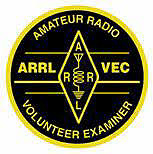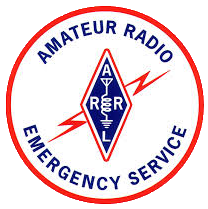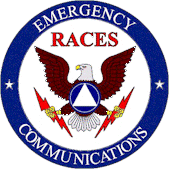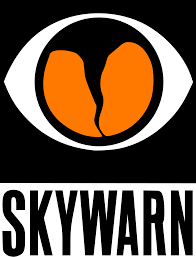Note: Images may be clicked for enlarged view
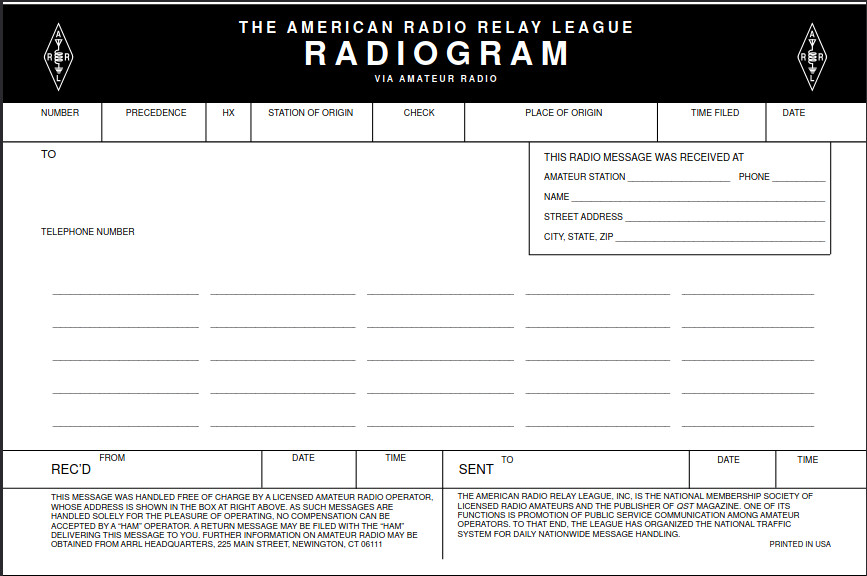 The National Traffic System (NTS) has provided a means of passing messages (usually referred to as traffic) via Radiograms for almost as long as amateur radio has existed. Before long distance telephone was common, and until the cost of long distance communication was reduced and ultimately eliminated, NTS was used by Amateur Radio operators to communicate around the country and the world, extending the service to fellow citizens and servicemen around the world.
The National Traffic System (NTS) has provided a means of passing messages (usually referred to as traffic) via Radiograms for almost as long as amateur radio has existed. Before long distance telephone was common, and until the cost of long distance communication was reduced and ultimately eliminated, NTS was used by Amateur Radio operators to communicate around the country and the world, extending the service to fellow citizens and servicemen around the world.
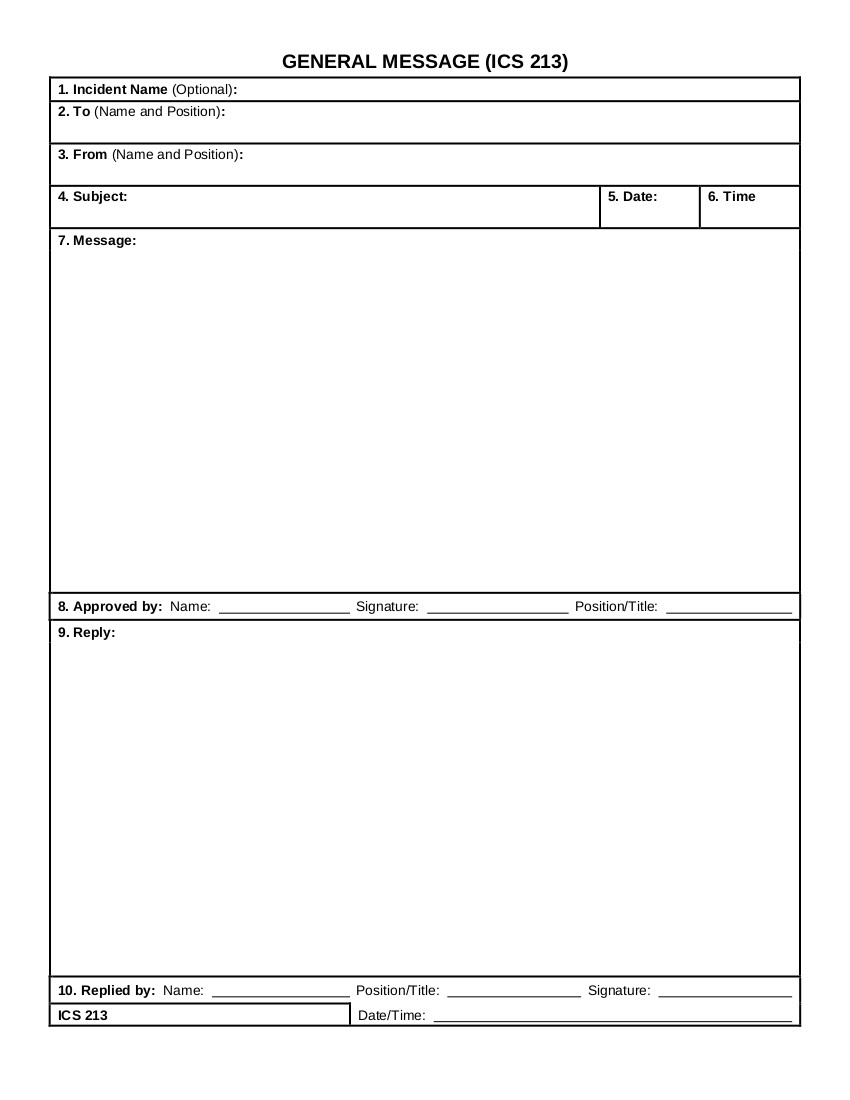 Modern technology has virtually eliminated the need for the passing of routine message traffic, but the NTS and the use of radiograms is still useful during emergencies, especially with the addition of digital modes to our arsenal.
Modern technology has virtually eliminated the need for the passing of routine message traffic, but the NTS and the use of radiograms is still useful during emergencies, especially with the addition of digital modes to our arsenal.
Modern technology isn't the only thing that has impacted our mission. The introduction of the Incident Command System by FEMA, and its almost universal adoption by everyone from local fire departments to NGOs like the Red Cross, has resulted in changes to how ARES does business. Virtually any organization or individual must be familiar with the Incident Command System and have some level of training in it (see ARES Training & FEMA).
When FEMA adopted ICS it developed its own message form, without considering how it would be communicated to and from remote locations. The ICS-213 message form bears similarity to our Radiogram and can be converted into, and communicated via, Radiograms.
 There are a few different ways to adapt the ICS-213 to be compatible with NTS. One way is to transcribe it to a Radiogram, another is to add the Preamble and Postamble to the ICS-213 by hand, and the third is to use an adapted ICS-213/Radiogram hybrid form.
There are a few different ways to adapt the ICS-213 to be compatible with NTS. One way is to transcribe it to a Radiogram, another is to add the Preamble and Postamble to the ICS-213 by hand, and the third is to use an adapted ICS-213/Radiogram hybrid form.
The ICS-213 has enough similarity that adapting the message is fairly straight-forward. The "address" section of the ICS-213 (top section with from, to, and date info) is roughly the same as the Address section of the Radiogram. The Message section, which comes next, is pretty much the same as a Radiogram's Message Text section. Likewise, the Authorized/Signature section of the ICS-213 is similar to the Signature portion of the Radiogram. Looking at the notated ICS-213 you can see how the sections are mapped. All that's left is the preamble of the Radiogram, which is filled out by the originating operator who would be handling the ICS-213 when first presented.
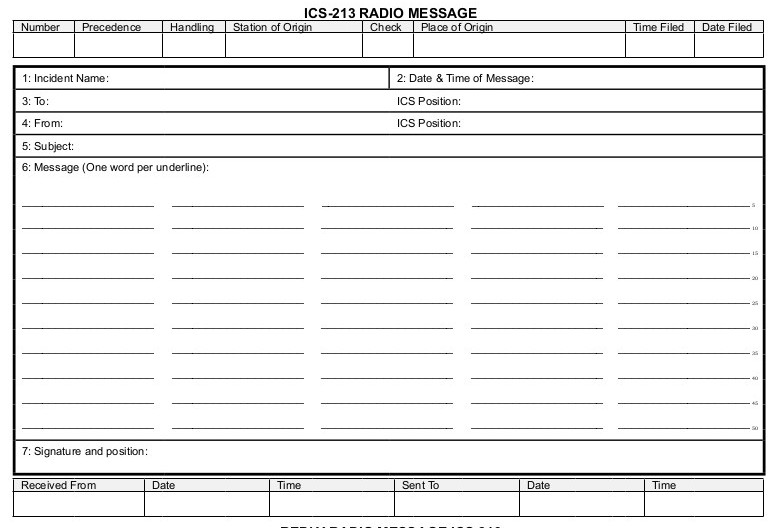 There are a few variants of an "ICS-213 Radiogram", which adds the necessary NTS/Radiogram Preamble and Postamble fields to the ICS-213. Ideally, this form could be used in place of an ICS-213 by the served agency, allowing the Amateur Radio operator to merely fill in the Preamble. If not, then the information could be easily transcribed. This would seem to be the ideal option to me.
There are a few variants of an "ICS-213 Radiogram", which adds the necessary NTS/Radiogram Preamble and Postamble fields to the ICS-213. Ideally, this form could be used in place of an ICS-213 by the served agency, allowing the Amateur Radio operator to merely fill in the Preamble. If not, then the information could be easily transcribed. This would seem to be the ideal option to me.
Another option would be for the operator to just handwrite the Preamble and Postamble information at the top and bottom of the original ICS-213. Since the Preamble and Postamble fields are in consistent order, they could simply be written in that proper order to be properly understood. As a matter of fact, experienced NTS operators can literally copy a Radiogram onto a napkin!
In the end, the exact way the ICS-213 is handled from originator until it is passed to the NTS will be determined by the served agency, with (hopefully) a little input from those of us serving them.
Setting aside the use of Radiograms, Winlink, a digital mode that allows sending and receiving emails even with no internet available, intrinsically handles a variety of ICS forms, including the ICS-213. More on that another time.
